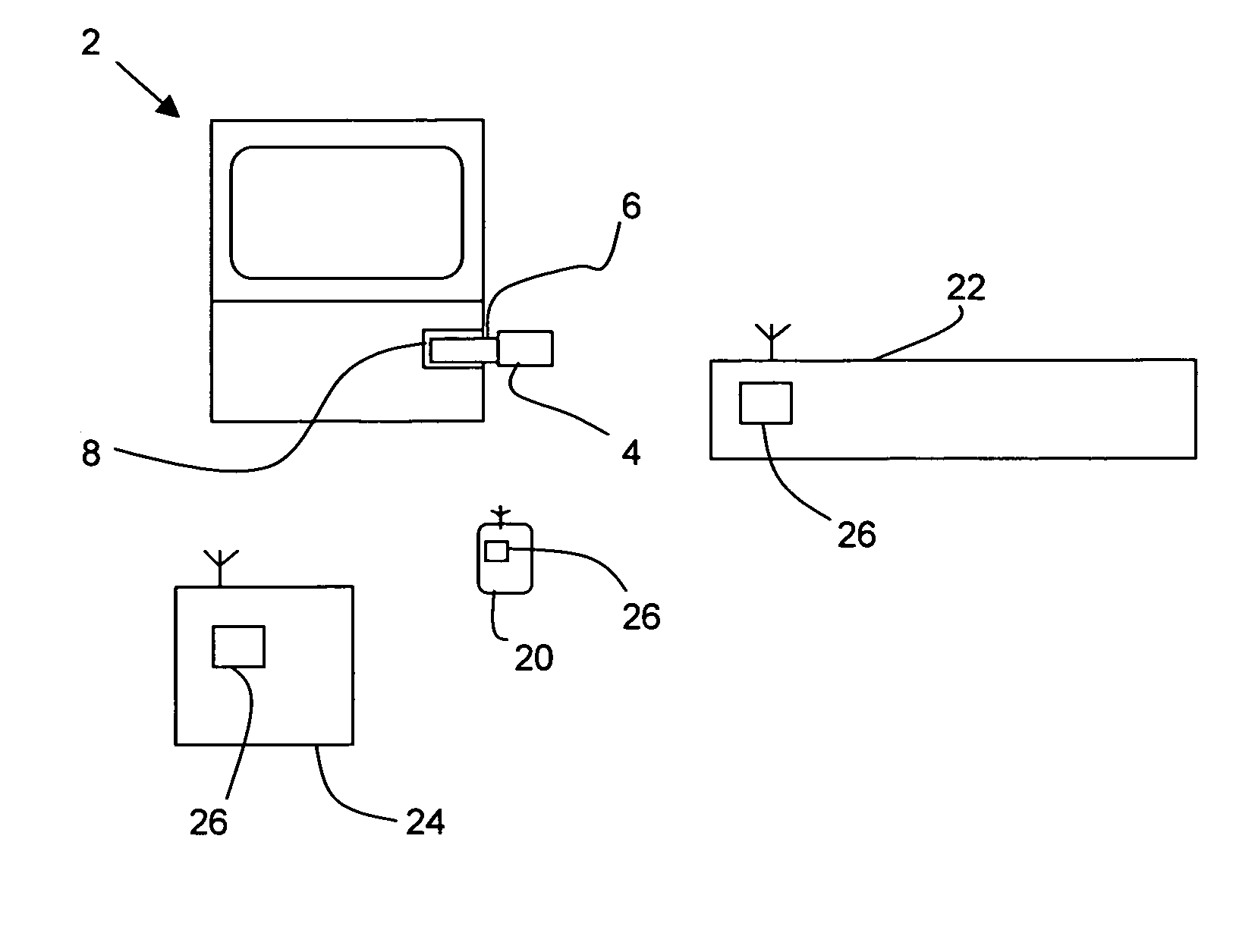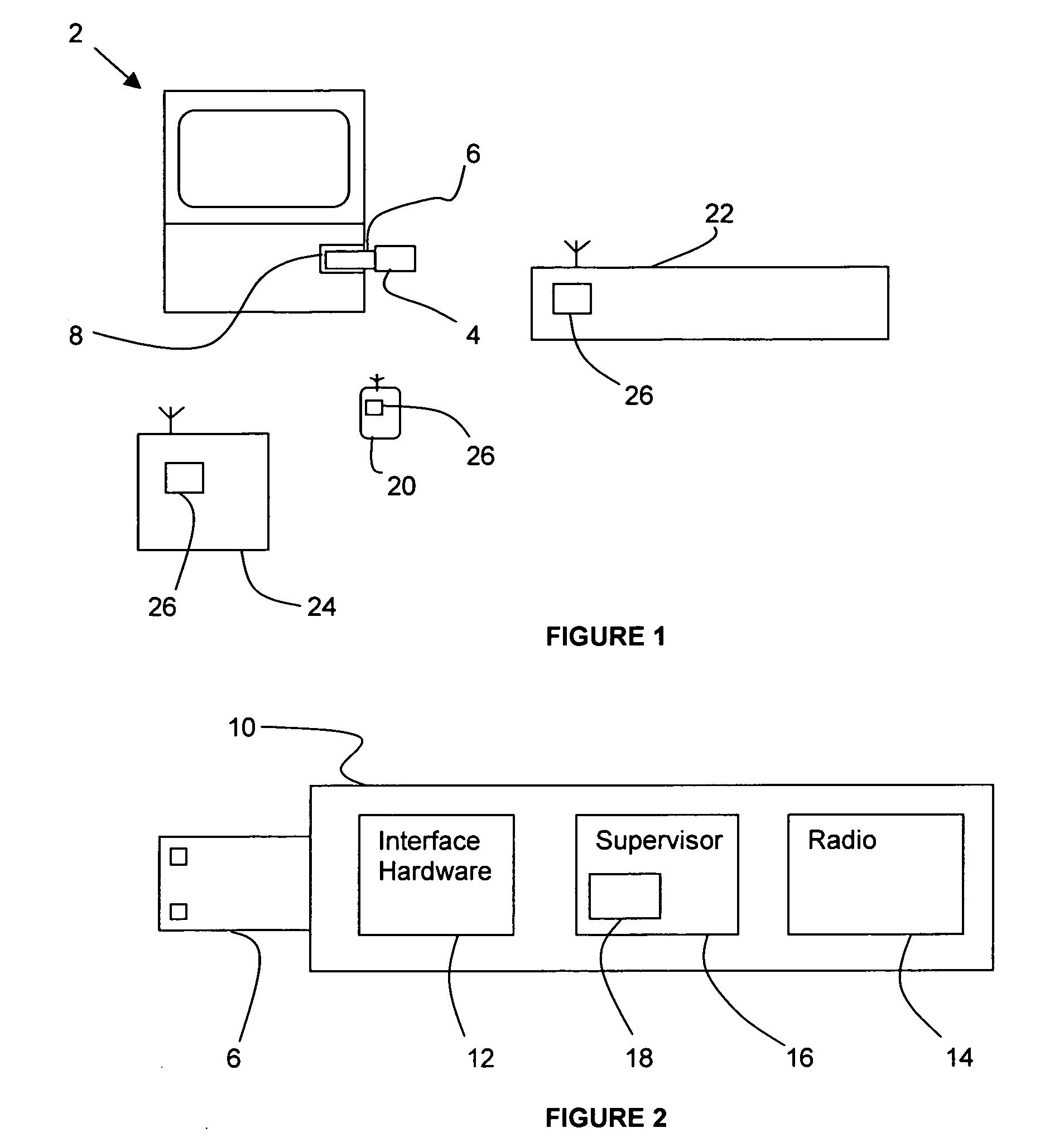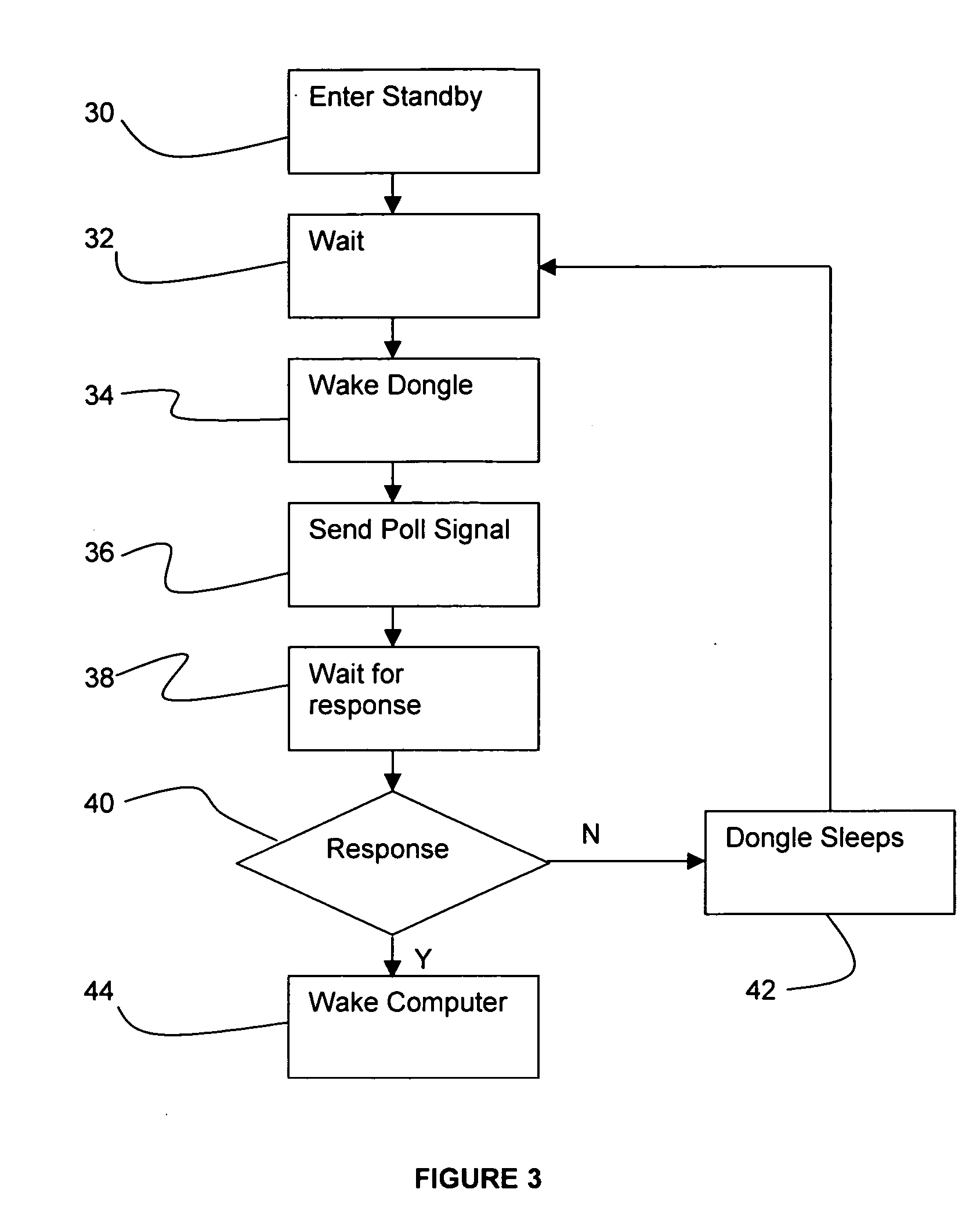Wireless controlled wake up
a wireless control and wake-up technology, applied in the field of electronic devices, can solve the problems of affecting the operation of low-power devices. the current of the device may be limited to 500 a, and the usb standard imposes significant constraints on the curren
- Summary
- Abstract
- Description
- Claims
- Application Information
AI Technical Summary
Benefits of technology
Problems solved by technology
Method used
Image
Examples
first embodiment
[0065] There are a number of possibilities for the signal sent. In a first embodiment, the remote device 20, 22 waits (step 52) for a beacon request sent (step 34) from the dongle 4.
[0066] This method is allowed by the IEEE 802.15.4 specification. The dongle periodically wakes up and performs an active scan which causes a beacon request command frame to be issued as a polling signal (step 36) with scan duration set to 0 (15 ms). In the embodiment, the scan duration is minimised in this way to save power and to allow a more frequent poll interval. Thus, in this case the predetermined period in step 38 is 15 ms. The remote device 20, 22 is configured to respond (step 56) to beacon request command frames with a beacon frame. This response only occurs when the remote device 20, 22 is attempting to wake the dongle since at all other times its receiver would not be on.
[0067] Note that although this functionality is permitted by the standard the functionality is very different to the conv...
second embodiment
[0085] The multiple polling makes the second embodiment more reliable in that if packet loss is experienced the extra polling makes it more likely that a message is received. The exact number of retries is dictated by a variable in the 802.1.5.4 specification (aMaxFrameRetries) which defaults to 3, so each message is sent once and repeated three further times. If a different choice is required, this variable can be changed to suit.
[0086] The second embodiment includes a further refinement. The data request is sent to a predetermined wake-up address that is different to each of the normal addresses of the external devices 20, 22, 24. The predetermined wake-up devices are arranged to respond to the predetermined wake-up addresses with the correct response (step 56) but also to change the address of the external device back from its predetermined wake-up address to the normal address.
[0087] In this way, any of the external devices can use the predetermined wake-up address and respond ...
PUM
 Login to View More
Login to View More Abstract
Description
Claims
Application Information
 Login to View More
Login to View More - R&D
- Intellectual Property
- Life Sciences
- Materials
- Tech Scout
- Unparalleled Data Quality
- Higher Quality Content
- 60% Fewer Hallucinations
Browse by: Latest US Patents, China's latest patents, Technical Efficacy Thesaurus, Application Domain, Technology Topic, Popular Technical Reports.
© 2025 PatSnap. All rights reserved.Legal|Privacy policy|Modern Slavery Act Transparency Statement|Sitemap|About US| Contact US: help@patsnap.com



